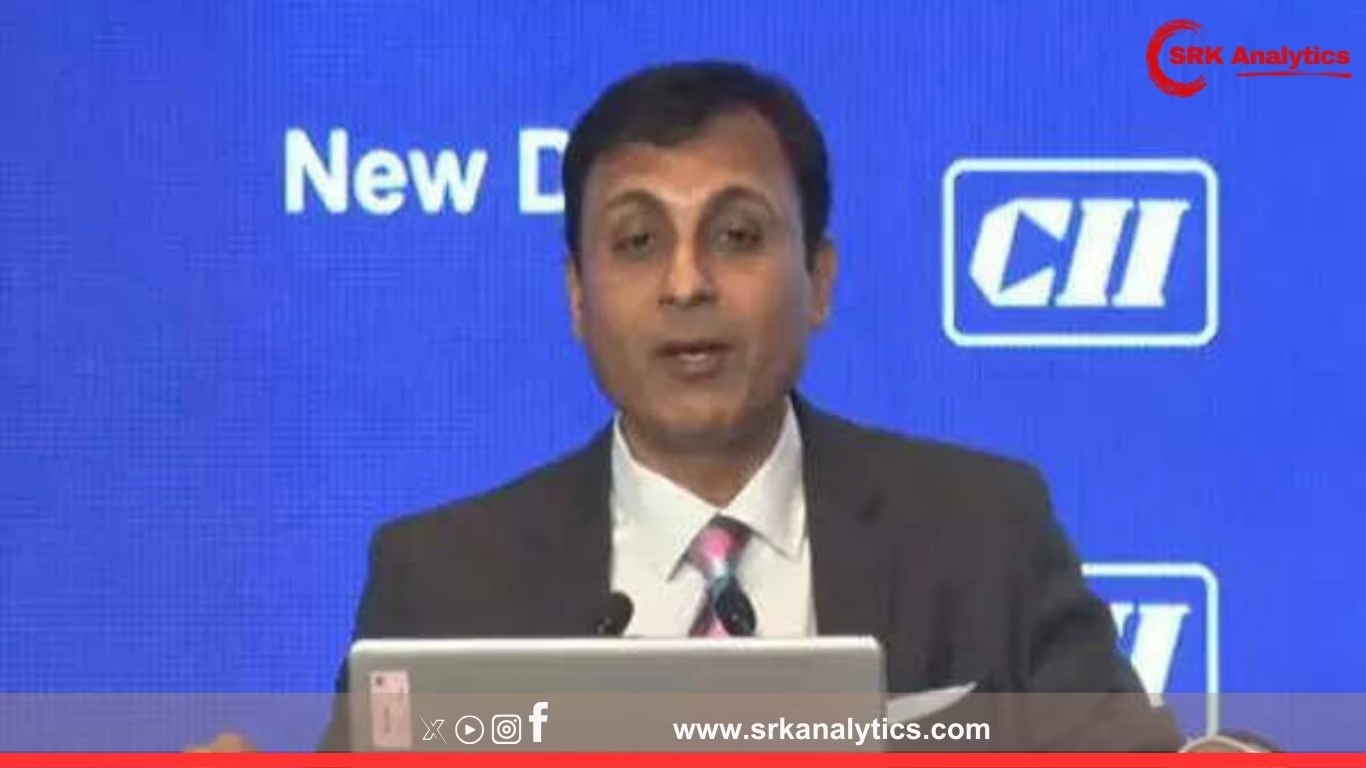In a positive development reflecting improved government finances, India’s fiscal deficit for the first two months of FY26 (April-May 2025) stood at Rs 13,163 crore, amounting to only 0.8% of the full-year budget estimate. This marks a significant narrowing compared to the same period last year, driven by higher revenue collections and disciplined expenditure management.
Key Highlights:
✅ Fiscal deficit (Apr-May 2025): Rs 13,163 crore
✅ Fiscal deficit as % of FY26 target: 0.8%
✅ FY26 fiscal deficit target: Rs 17.35 lakh crore (5.1% of GDP)
✅ Revenue receipts (Apr-May): Rs 4.27 lakh crore (16.8% of BE)
✅ Total expenditure (Apr-May): Rs 4.40 lakh crore (12.3% of BE)
✅ Net tax revenue: Rs 3.69 lakh crore
What Is Fiscal Deficit?
Fiscal deficit is the gap between government expenditure and total revenue excluding borrowings. It indicates how much the government needs to borrow to meet its spending commitments.
| Formula | Meaning |
|---|---|
| Fiscal Deficit = Total Expenditure – (Revenue Receipts + Non-debt Capital Receipts) | Measures dependence on borrowings |
Comparison With Previous Years
| Period | Fiscal Deficit (Rs crore) | % of BE |
|---|---|---|
| Apr-May 2023 | 2,10,287 | 12.3% |
| Apr-May 2024 | 2,12,790 | 11.8% |
| Apr-May 2025 | 13,163 | 0.8% |
(BE – Budget Estimate)
Year-on-Year Fiscal Deficit Trend
| Year | Apr-May (Rs crore) | % of BE | Full Year Deficit (Rs lakh crore) | Fiscal Deficit % of GDP |
|---|---|---|---|---|
| 2023-24 | 2,10,287 | 12.3% | 17.55 | 5.9% |
| 2024-25 | 2,12,790 | 11.8% | 16.85 | 5.7% |
| 2025-26 | 13,163 | 0.8% | 17.35 (target) | 5.1% (target) |
Reasons Behind Narrowed Deficit
1. Robust Revenue Growth
- GST collections: Average monthly GST crossed Rs 1.78 lakh crore during April-May, reflecting strong consumption and compliance.
- Direct taxes: Higher advance tax payments from corporates boosted net tax revenue to Rs 3.69 lakh crore.
- Non-tax revenue: Significant dividend transfers from RBI and PSU banks in April-May.
2. Controlled Expenditure
The government maintained fiscal discipline by:
- Slower pace of capital expenditure rollout in the first two months.
- Rationalised subsidy payouts after petroleum prices stabilised.
- Maintaining revenue expenditure below 12% of BE during April-May.
Breakup Of Government Finances (Apr-May FY26)
| Head | Amount (Rs crore) | % of BE |
|---|---|---|
| Net tax revenue | 3,69,000 | 16.9% |
| Non-tax revenue | 58,000 | 27.1% |
| Non-debt capital receipts | 2,400 | 3.1% |
| Total revenue receipts | 4,27,000 | 16.8% |
| Total expenditure | 4,40,000 | 12.3% |
| Revenue expenditure | 3,46,000 | 12.1% |
| Capital expenditure | 94,000 | 13.2% |
| Fiscal deficit | 13,163 | 0.8% |
Government’s Full Year Fiscal Strategy
Finance Minister Nirmala Sitharaman in the interim budget targeted:
- FY26 fiscal deficit at 5.1% of GDP, down from 5.8% in FY25.
- Revenue buoyancy from GST and direct taxes to support capital expenditure without large borrowings.
- Capex target: Rs 11.11 lakh crore (3.4% of GDP) to fuel infrastructure growth and job creation.
Expert Analysis
1. Fiscal Consolidation On Track
Suvodeep Rakshit, Senior Economist, Kotak Institutional Equities:
“The sharp narrowing is partly timing of expenditure but overall signals a strong start towards achieving the FY26 target of 5.1% fiscal deficit.”
2. Sustainable Debt Path
India’s fiscal consolidation is critical to:
- Maintain macro stability amid global economic uncertainty.
- Control government debt, which stands at ~81% of GDP, higher than emerging market average.
- Retain credit rating stability, lowering sovereign borrowing costs.
Market Reactions
- Bond yields eased, with 10-year G-sec yield falling to 7.02%, anticipating lower government borrowing pressure.
- Stock markets welcomed fiscal prudence, with BSE Sensex rising 350 points in intraday trade post CGA data release.
Potential Risks Ahead
Despite the positive start, risks remain:
| Risk Factor | Impact |
|---|---|
| Monsoon Uncertainty | Poor rains could increase food subsidy burden |
| Oil Price Volatility | Brent above $85 may widen fertiliser and petroleum subsidies |
| Global Slowdown | Lower exports may impact tax collections |
| Election Year Spending | FY26 is a full budget year post Lok Sabha elections; populist schemes could raise expenditure |
Future Outlook
Economists predict:
- The first two months’ low deficit may not sustain at this pace as capital expenditure picks up from Q2 onwards.
- However, achieving 5.1% deficit target is feasible, aided by tax buoyancy and controlled subsidy spending.
Conclusion
India’s fiscal deficit data for April-May 2025 reveals a strong foundation for fiscal consolidation, with the government utilising only 0.8% of its full-year borrowing target in the first two months. This reflects robust tax collections, prudent spending, and strategic budget execution aimed at sustaining growth while controlling debt.
As the Finance Ministry prepares the full Budget 2025-26 to be presented in July, markets, global investors, and rating agencies will closely watch whether this fiscal discipline continues, enabling India to maintain macroeconomic stability amid global uncertainties.
Disclaimer: This article is based on data released by the Controller General of Accounts (CGA), Ministry of Finance, and market expert opinions as of June 30, 2025. Readers are advised to refer to official budget documents for detailed fiscal policy updates.











